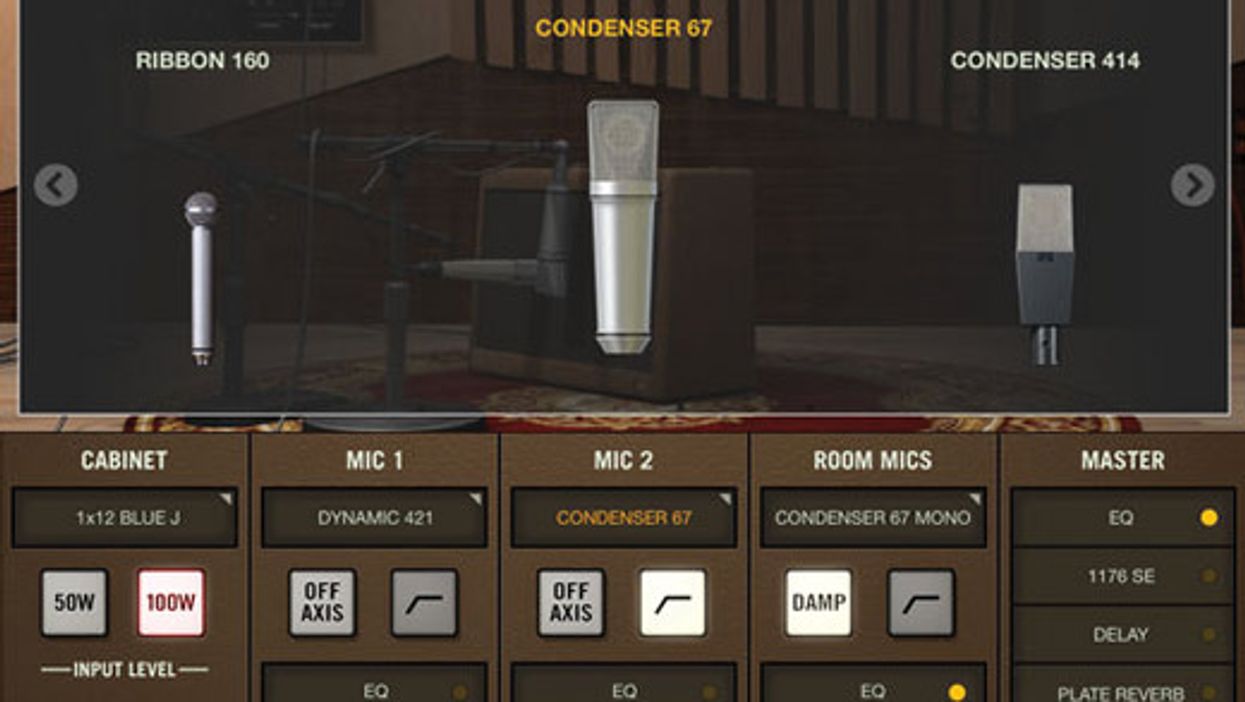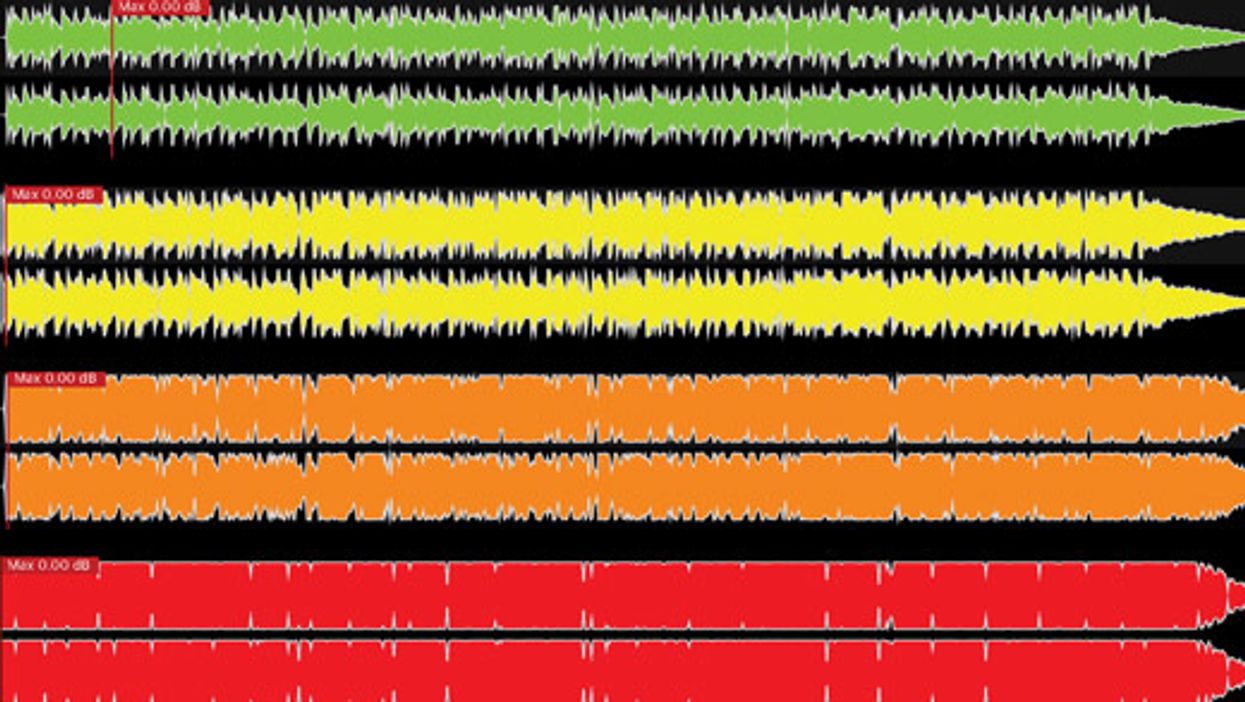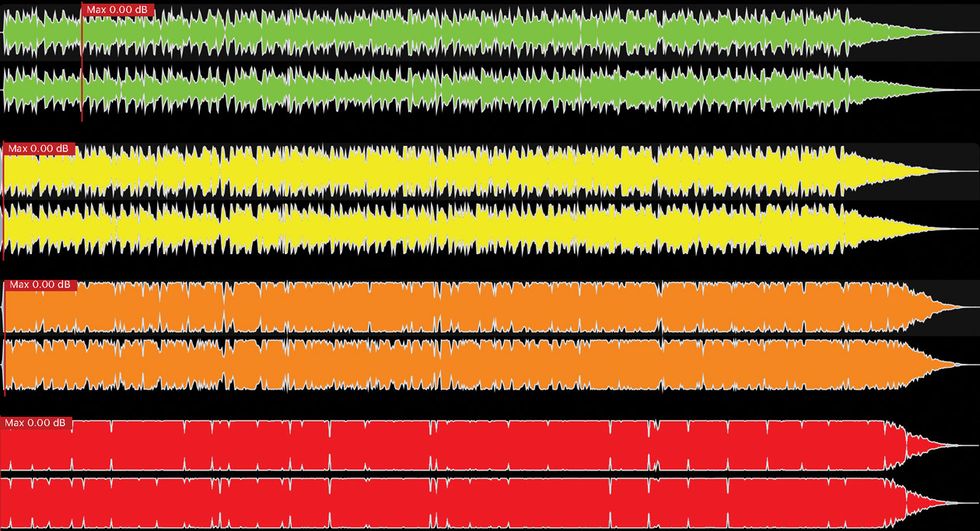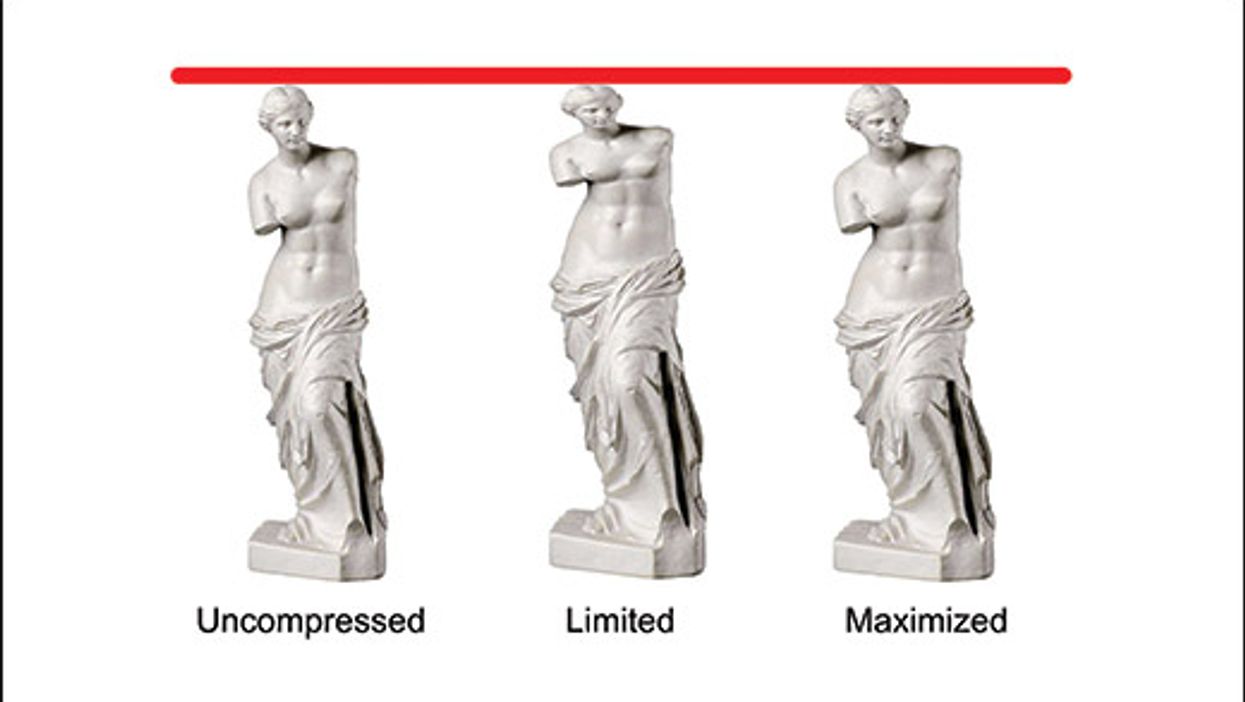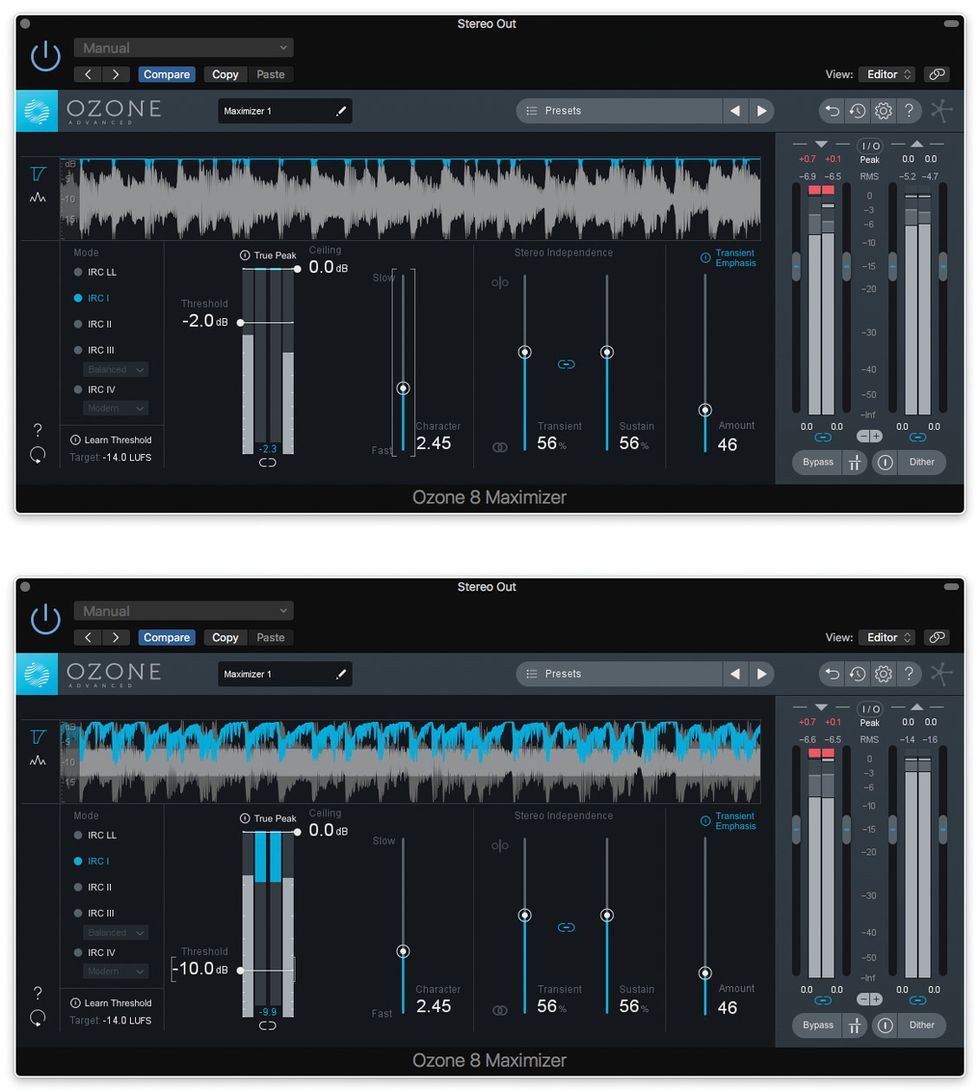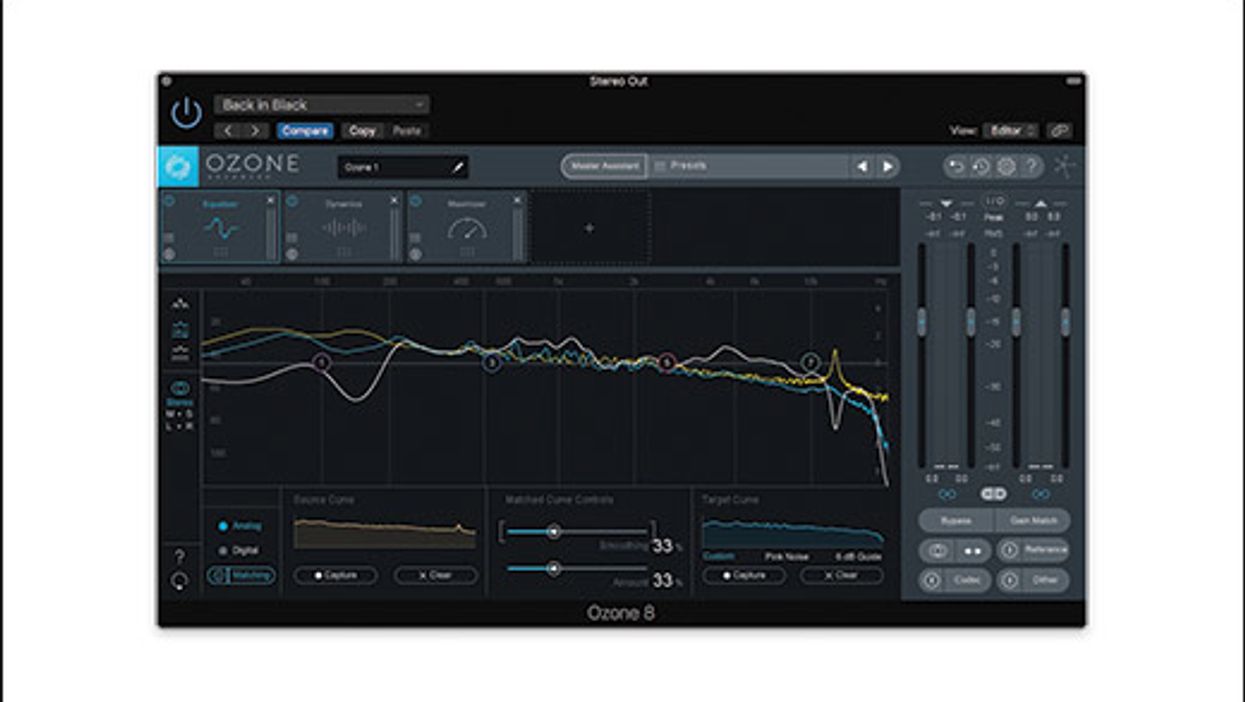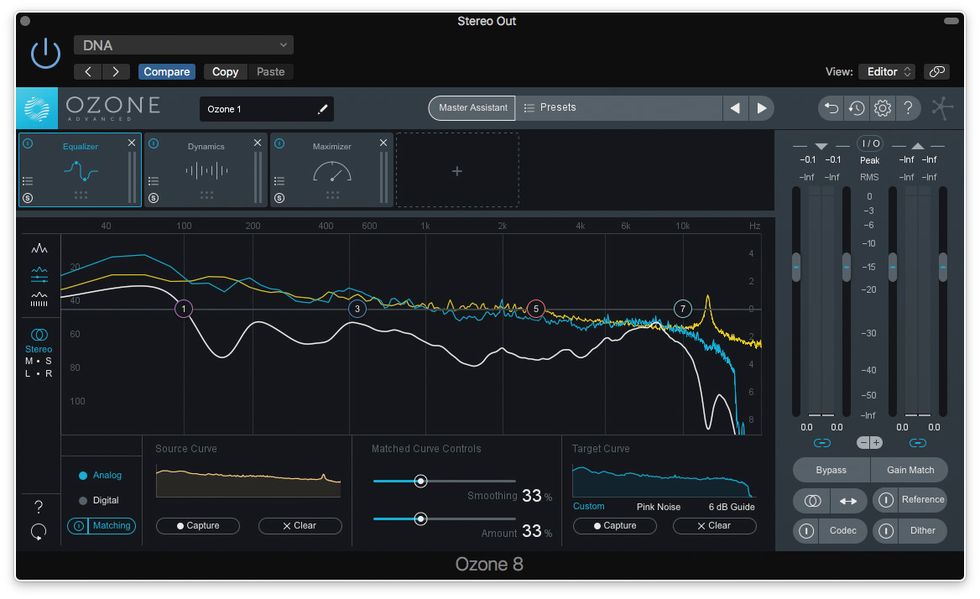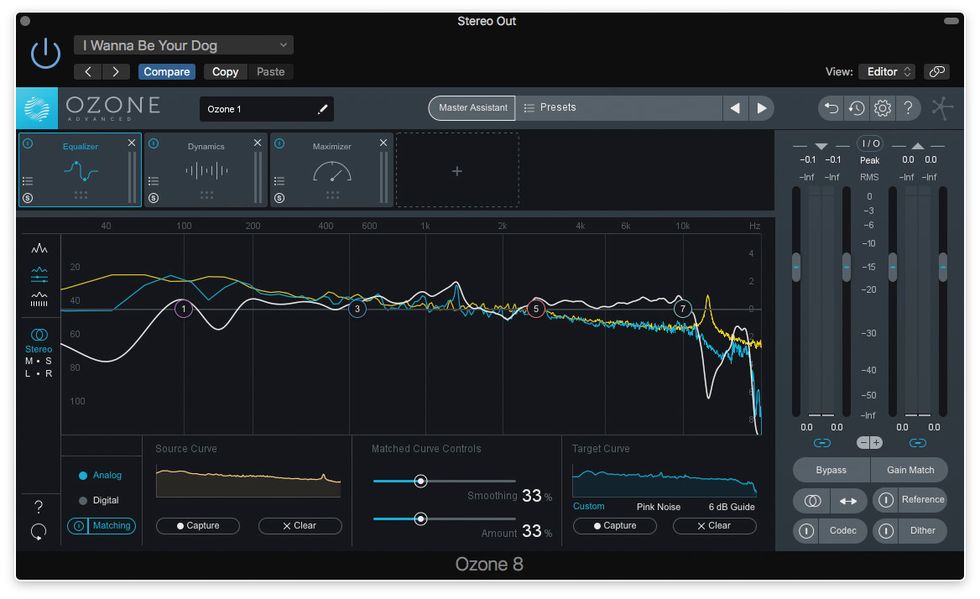Were you the kind of kid who wouldn’t eat if any foods touched each other on the plate? (“But mom! There’s peas in the mashed potatoes!”) Maybe that was nature’s way of encouraging you to become a recording engineer.
Recordings tools and techniques are often designed to avoid leakage—that is, when the sound of an instrument or voice is picked up by a mic intended for another sound. Baffles and gobos, hyper-cardiod mics, and the practice of recording drums and guitar amps in isolated rooms all share the goal of preventing sonic peas from polluting musical mashed potatoes.
There are good reasons for these practices. Editing and mixing is far faster if each track contains only its intended sound. For example, it’s easier to EQ the low end of a miked guitar amp when drums and bass haven’t infiltrated the track. Also, uncontrolled leakage can make realistic-sounding overdubs nearly impossible. In many cases, isolation is the right choice.
One for all. But remember, until 1960 or so, most recordings were made with a single mic. There was nothing but leakage! After multitrack recording became the norm, some artists still exploited leakage. Ever heard Zep’s studio outtakes, with individual mics soloed? Bonham’s deafening drums bleed everywhere. That leakage is one reason those records sound so exciting and organic. Nowadays many rock, roots, and indie bands deliberately use leakage as sonic glue to bind a mix. Yeah, you can’t repair every single flub, and your mix options are limited. But sometimes it’s worth it for the live feel.
Here are a few leakage-heavy examples from a recent recording session with 6-string genius Mark Goldenberg, who was featured in the February 2016 issue. (They’re from Suite ’66, an upcoming EP of improvisations on songs from 1966.) We recorded with four mics, and man, we totally got peas in the mashed potatoes!
Leaked information. First, check out the overall mix (Ex. 1) before we break it down mic by mic to reveal reckless levels of leakage. Mark’s on the right, playing his magnificent Kenny Hill classical guitar, and I’m on the left with my Veillette Avant Gryphon, an octave-up 12-string.
Sounds pretty organic, right? Credit the leakage. Mark and I set up close together, our knees just a couple of feet apart with no baffle between us. This definitely helped the improvised performances, since we could watch hands and read body language.
Now check out Mark’s close mic in Ex. 2—and all the 12-string bleeding into it. (We set up the close mics as described in my Nov. ’14 column.)
There’s just as much nylon string on my 12-string track. But once you combine the two close mics and pan them apart, the nice stereo image in Ex. 3 emerges.
We also used a pair of overheard mics, positioning them close together, aiming down at the guitars. The right-hand mic was angled left, and the left angled right (see photo). As expected, you hear more of the room, but with relatively little low end (Ex. 4). (The two overhead tracks are panned fully left and right. But if you don’t have two matching mics for overheads, don’t sweat it. You often get great results via a single overhead mic, with the panned close mics providing sufficient stereo spread.)
The lack of lows made it easy to blend the overheads with the close mics. Compare the combined sound in Ex. 5 with the close-miked sound of Ex. 3. Doesn’t Ex. 5 feel more lively and three-dimensional?
A touch of plate reverb and some compression and analog tape simulation on the output bus brings us back to the full sound of Ex. 1.
Here’s another example, this one featuring Mark’s Collings 001MH steel-string and my Gretsch Spectra Sonic baritone electric, played through a miked Carr Slylark amp with the spring reverb on. First, the complete mix (Ex. 6).
Again, let’s peel it back. In Ex. 7 you hear the close-miked Collings with lots of amp sound bleeding through.
Ex. 8 combines the two close mics.
Ex. 9 is the overheads alone, and Ex. 10 blends all four mics.
Again, some plate reverb and output bus compression give us the complete picture in Ex. 6.
Blood everywhere. All four tracks bleed into each other. That made it next to impossible to fix the many little flams and clams, but the payoff was the naturalistic sound of two players creating something in the moment. It’s not a method for all occasions, especially when tentative performances are involved. But employed judiciously, these techniques can make the listener feel like they’re right there in the room with the musicians. (Assuming that’s a good thing.)
Does anyone else out there like to let it bleed in the studio? Please share your bloody good experiences!
You can hear Suite '66 in its entirety on SoundCloud.








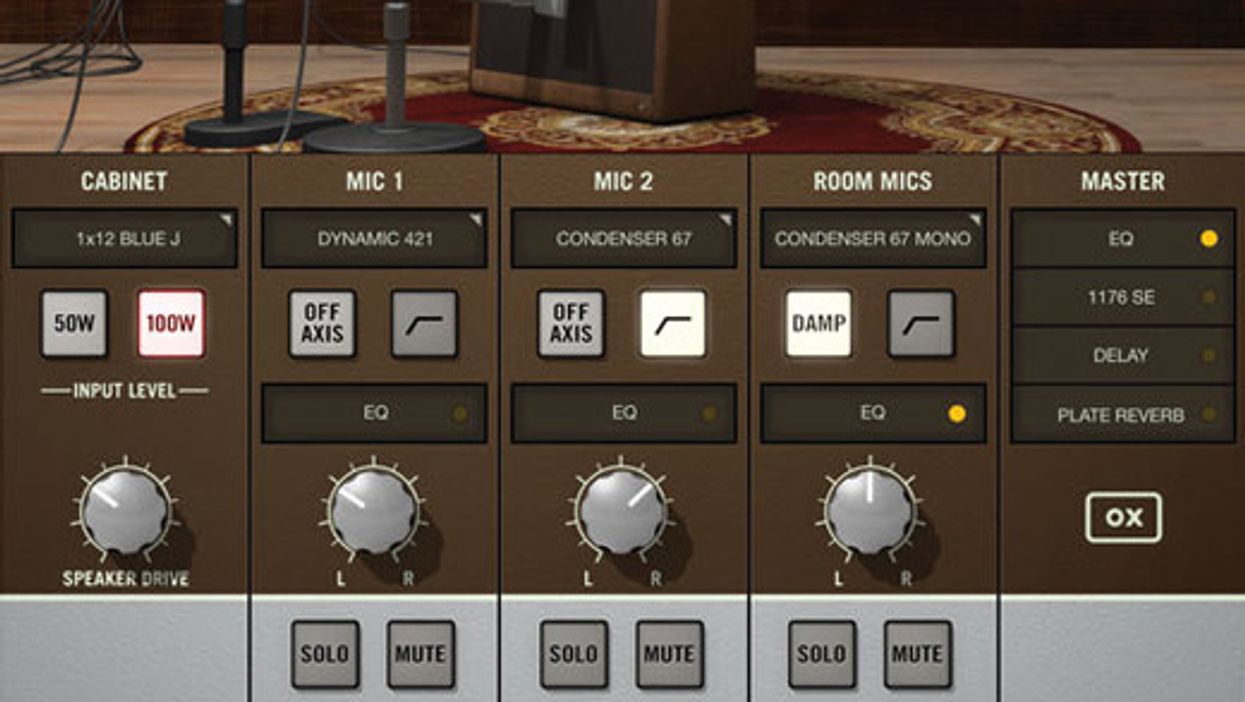


![Rig Rundown: Russian Circles’ Mike Sullivan [2025]](https://www.premierguitar.com/media-library/youtube.jpg?id=62303631&width=1245&height=700&quality=70&coordinates=0%2C0%2C0%2C0)



